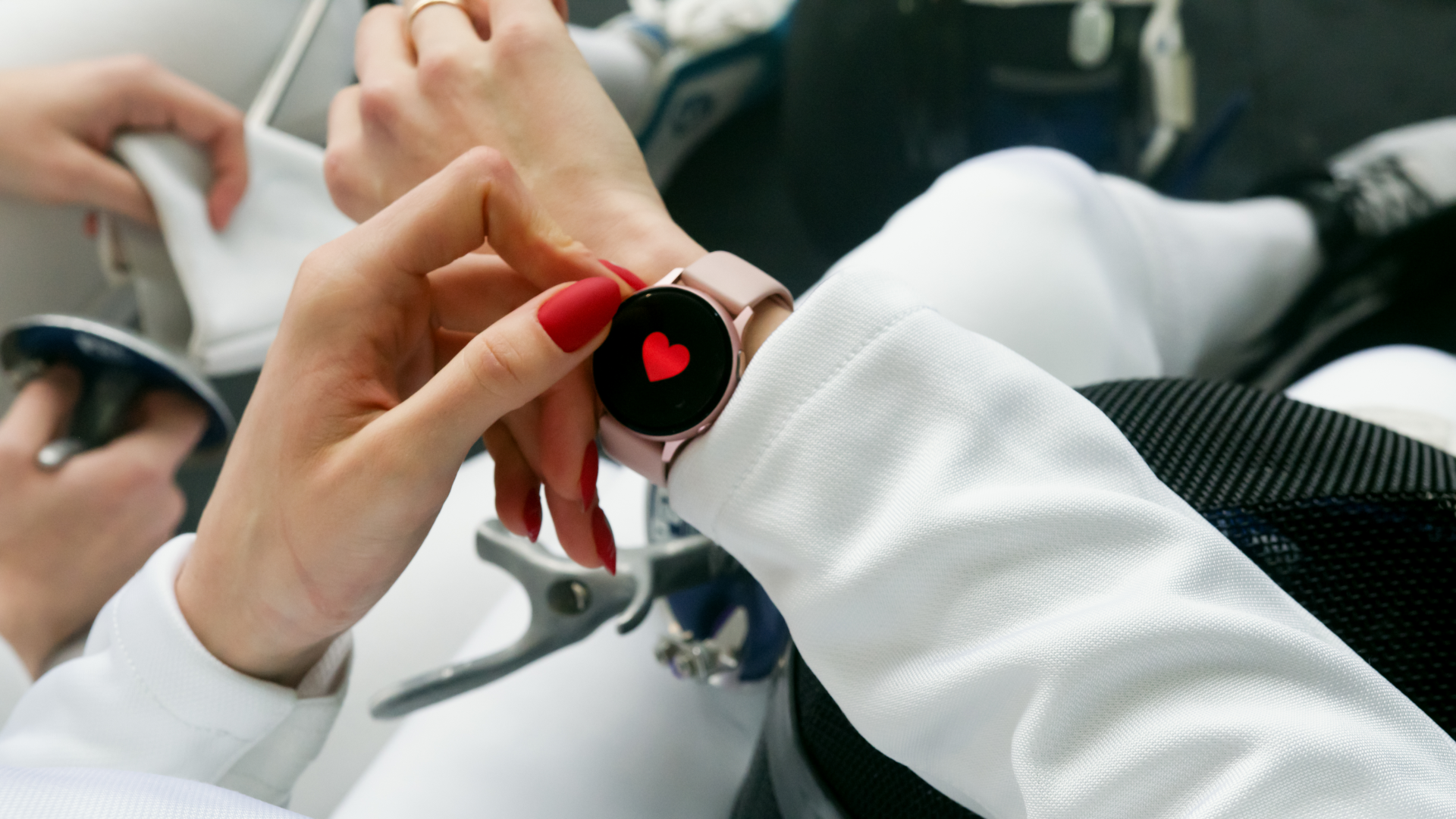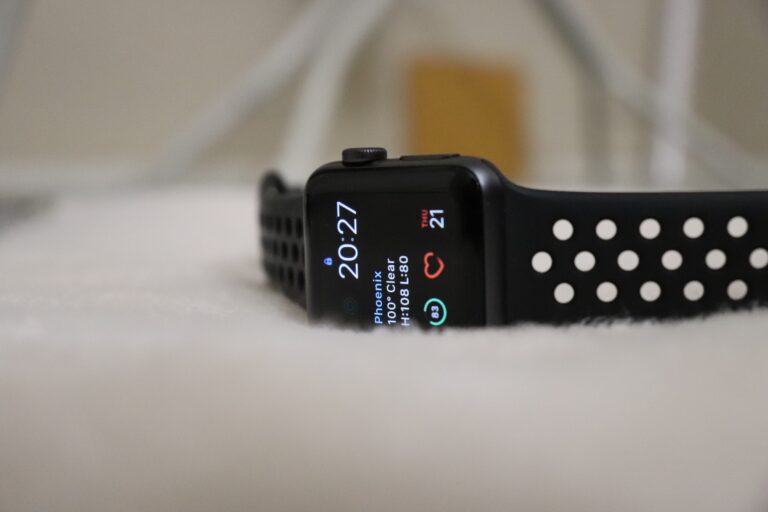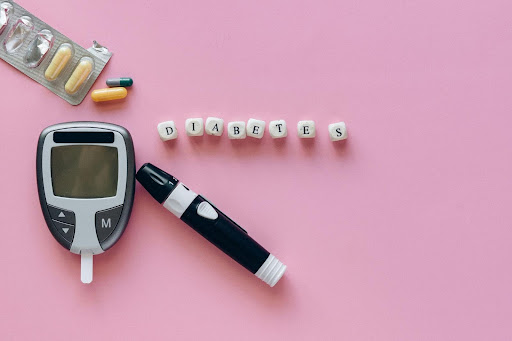How Does Sleep Monitor Work on Smartwatch-2025
Until the last decade, few tools were available to measure sleep quality without spending the night in a sleep laboratory.
But today, sleep monitoring is built into nearly all smartwatches to help millions with sleep troubles improve their sleep quality. Some can even recommend how to improve your nightly rest.
The big question, however, is:
How does a sleep monitor work on a smartwatch?
How A Smartwatch Tracks Your Sleep
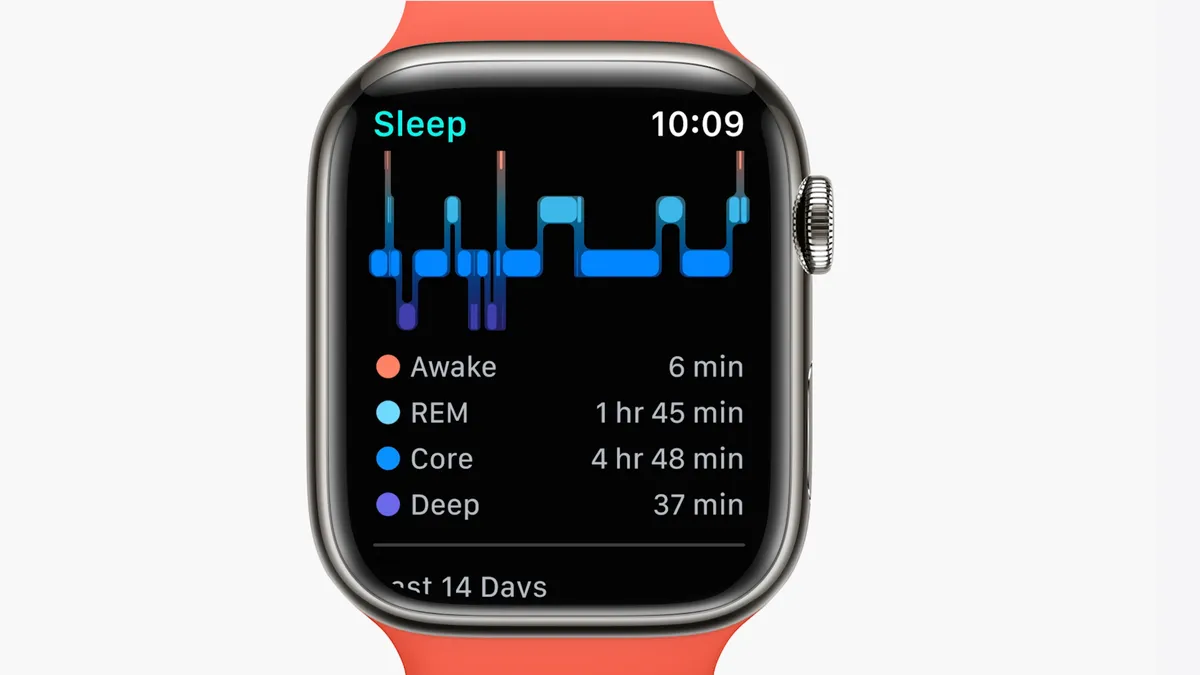
Smartwatches track sleep using a combination of sensors and algorithms. They have:
- Motion detectors (Accelerometer and gyroscope)
- Heart rate detector
- Sleep tracking algorithms
The three combine their unique mechanisms to track your sleep as follows:
Motion Detectors
Most smartwatches have accelerometers and gyroscopes. Accelerometers measure movement patterns a metric that smartwatches use to track sleep stages such as light, deep, or rapid eye movement (REM) sleep.
A gyroscope, on the other hand, measures the rate of rotation around one or more axes. It helps the smartwatch understand its orientation or movement in three-dimensional space. In conjunction with accelerometer data, gyroscope data help determine your movement patterns during sleep.
Heat Rate Detectors
Smartwatches have heart rate detectors that measure heart rate fluctuations. These two metrics are critical in assessing sleeping trends and detecting sleep issues.
The heart rate detectors typically work using a technology called photoplethysmography (PPG). Your smartwatch will have LED lights — usually red or green — that shine onto your skin. These lights have photodetectors that measure the amount of light that is reflected from your skin. The degree of light reflection helps detect changes in blood volume beneath the skin caused by the beating of your heart.
Sleep Tracking Algorithm
Motion and heart rate detectors collect all the data necessary to analyze your sleep, but the algorithms process them. The algorithms can distinguish between different sleep stages using the combination of movement patterns, heart rate variations, and sometimes additional factors like ambient light levels.
You might need to manually input some data, like when you go to bed, when you wake up, or if you take a stimulant like coffee.
Once your smartwatch has collected and analyzed the sleep data, it then presents it to you in an easy-to-understand chart or graph.
You can see the details such as:
- Duration in each sleep stage
- How frequently you wake up during the night
- The overall sleep quality metrics
Such information makes your smartwatch useful for tracking your sleeping trends over time and identifying potential areas for improvement in your sleep habits.
What Sleep Metric Do Smart Watches Monitor (And How They Do It)
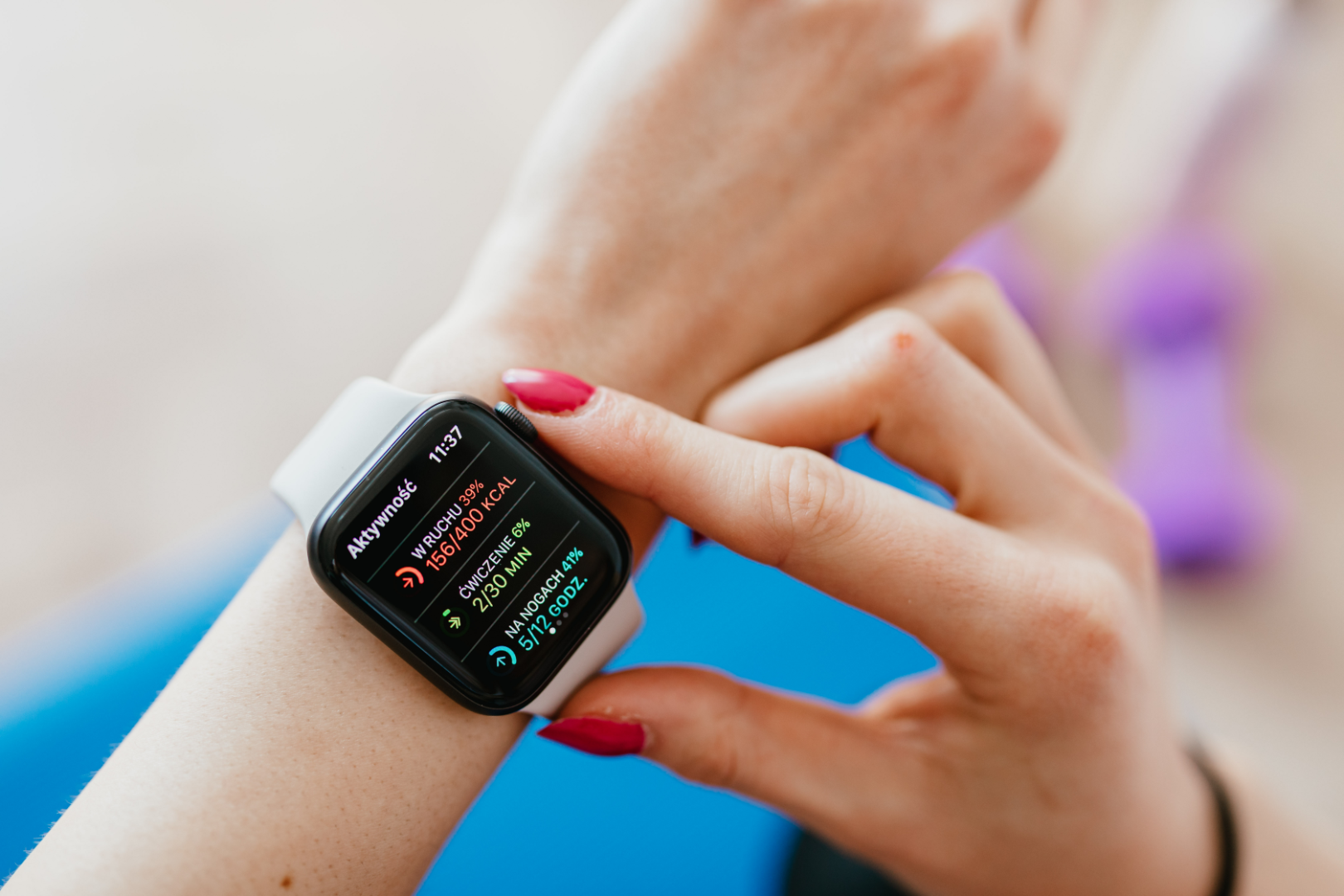
Smartwatch sleep tracking feature can track several sleep data. Here’s an overview of the most common ones and how smartwatches monitor them.
Sleep duration
Smartwatches track the total sleep duration. You can keep a close record of the time you fell asleep and when you woke up to determine how long you slept.
Then, the watch’s algorithm can show you if you achieve the recommended amount of sleep for your age group.
Time spent in each sleep cycle
Smartwatches can detect different sleep stages, such as:
- Light sleep: This is the first stage of sleep. You might still be aware of your surroundings and might wake up at the slightest sound. During this stage, your smartwatch registers body movements that are typically slower and less pronounced as compared to wakefulness. It also detects fluctuations in heart rate and breathing patterns to distinguish light sleep from wakefulness or REM sleep.
- REM sleep: During REM sleep, your body begins to relax and tends to move between light and deep sleep stages. You’ll have irregular breathing patterns, reduced body movement, and variable heart rate. Your watch will record all these data to determine when you have entered the REM sleep stage.
- Deep Sleep: During deep sleep, the body has minimal movement and muscle activity. The heart rate and breathing patterns become more stable and regular. You also have low heart rate variability compared to the Light and REM sleep. Your smartwatch will register all these metrics and recognize that you are in the deep sleep phase. This phase is characterized by a state of restorative rest.
Sleep Quality
Your smartwatch can measure your sleep quality by analyzing several data it collects during your sleep, such as:
- Consistency
- Sleep duration
- Sleep interruption
- Heart rate variability
- Your movement during sleep
- Time you spend on each sleep cycle
From these data, the algorithm might recommend ways to improve your sleep quality.
Sleep Environment
Some smartwatch sleep trackers can record your sleep environment and how comforting it is. Such smartwatches have ambient light sensors that can measure the brightness levels in the sleep environment. That way, they can offer insights into how light exposure can affect your sleep quality.
Others include noise, temperature, and humidity sensors that monitor how these environmental factors affect your sleep.
Lifestyle
Smartwatches can track lifestyle factors influencing sleep quality by collecting data on various aspects of your daily routines and behaviors. They can track your daily physical activity levels, such as steps taken, distance traveled, and calories you burn. Then, the watch will analyze how your activity patterns provide insights into how it impacts your sleep quality.
Others have stress trackers that monitor your stress levels based on factors such as heart rate variability and skin conductance. Stress can disrupt sleep patterns and contribute to sleep disorders like insomnia. Your smartwatch can track your stress levels throughout the day and help you identify what is disturbing your sleep.
Is It Safe To Wear a Smartwatch to Track Your Sleep?

In a word, yes. It’s safe to wear a smartwatch for sleep tracking as long as you’re comfortable with it.
If you want to track your sleep, wearing your watch to bed can help you collect sleep data. You can then use the data and suggestions to adjust your daily routine and sleep to relax your body and mind.
However, some might find the watch uncomfortable on the wrist while sleeping. In such a case, wearing a smartwatch might further disturb their sleep.
Other people might get skin irritation, especially when the smartwatch fits tightly or heats up.
When that’s the case, sleep tracking can do more harm than good. An alternative sleep tracker like a ring or an under-mattress sleep tracking pad.
However, there is no problem wearing a smartwatch overnight if you don’t have any complications.
What About The Radiation in Smartwatches
Like all electronic gadgets, your smartwatch will emit some radiation in the form of an Electromagnetic Field (EMF). However, most smartphones use low-frequency EMF, which are non-ionizing radiations and don’t have enough energy to cause harm.
Plus, they usually send signals in pulses for a short period, exposing you to minimal RF radiation over time.
Wrapping it Up
Smartwatches use sensors such as heart rate monitors, accelerometers, and gyroscopes to track sleep. Then, it might store sleep data through the accompanying app.
It might then provide you with personalized sleep reports and recommendations. However, you should consider factors that affect accuracy and use the watch appropriately.
To get the most out of sleep tracking with a smartwatch, you should integrate it into your daily routine. Consistently putting it on will help you collect accurate sleep data.

